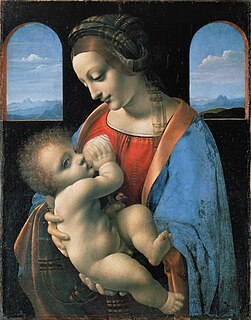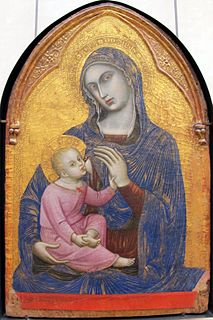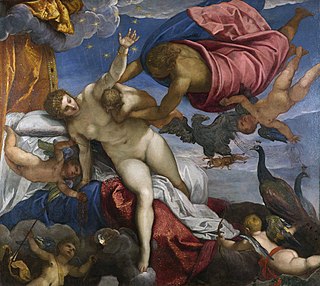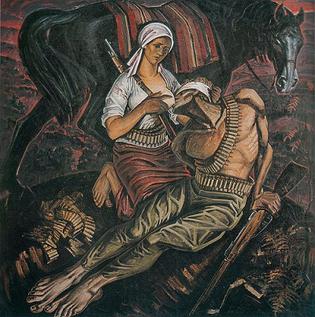 W
WThe international breastfeeding symbol is a symbol that depicts a woman breastfeeding a baby. It was designed by Matt Daigle, a graphic artist and father, in response to a contest hosted by Mothering magazine. The winner was chosen in November 2006 out of a total of more than 500 entries. Daigle, who says his wife and son were the inspiration behind the symbol, released the copyright to the symbol to the public domain.
 W
WThe Madonna Litta is a late 15th-century painting, traditionally attributed to Leonardo da Vinci, in the Hermitage Museum, Saint Petersburg. It depicts the Virgin Mary breastfeeding the Christ child, a devotional subject known as the Madonna lactans. The figures are set in a dark interior with two arched openings, as in Leonardo's earlier Madonna of the Carnation, and a mountainous landscape in aerial perspective can be seen beyond. In his left hand Christ holds a goldfinch, which is symbolic of his future Passion.
 W
WMadonna with the Green Cushion is an oil painting by the Italian artist Andrea Solari, painted in c. 1507–1510, and it is now owned by the Louvre Museum in Paris. Its dimensions are 59.5 by 47.5 cm.
 W
WThe Melun Diptych is a two-panel oil painting by the French court painter Jean Fouquet created around 1452. The name of this diptych came from its original home in the Collegiate Church of Notre-Dame in Melun. The left panel depicts Étienne Chevalier with his patron saint St. Stephen and the right panel depicts the Virgin and Christ child surrounded by cherubim. Each wooden panel measures about 93 by 85 centimeters and the two would have been hinged together at the center.
 W
WThe Nursing Madonna, Virgo Lactans, or Madonna Lactans, is an iconography of the Madonna and Child in which the Virgin Mary is shown breastfeeding the infant Jesus. In Italian it is called the Madonna del Latte. It was a common type in painting until the change in atmosphere after the Council of Trent, after which it was rather discouraged by the church, at least in public contexts, on grounds of propriety.
 W
WThe Origin of the Milky Way is a painting by the Italian late Renaissance master Jacopo Tintoretto, in the National Gallery, London, formerly in the Orleans Collection. It is an oil painting on canvas, and dates from ca.1575–1580.
 W
WThe Origin of the Milky Way, or The Birth of the Milky Way, is a painting by the Flemish artist Peter Paul Rubens, featuring the Greco-Roman myth of the origin of the Milky Way. The painting depicts Hera (Juno), spilling her breast milk, the infant Heracles (Hercules) and Zeus (Jupiter) in the background, identifiable by his eagle and lightning bolts. Hera's face is modelled on Rubens' wife, Hélène Fourment. The carriage is pulled by Hera's favourite animals, peacocks. Due to the dark background of the night sky the figures gain a greater sense of volume.
 W
WPartisan Ballad is a painting by Belarusian artist Mai Dantsig showing a partisan woman breastfeeding a weary partisan man during World War II. Both are equipped with rifles and ammunition belts. Dantsig borrowed the Roman Charity theme, having seen the eponymous painting by Peter Paul Rubens in the Hermitage Museum. Partisan Ballad alludes to the German occupation of the Soviet Union on the Eastern Front of World War II when Belarusian SSR became the haven of Soviet partisans.